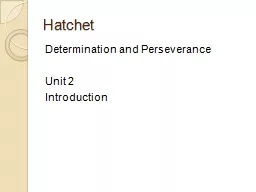PPT-Hatchet by Gary Paulsen
Author : marina-yarberry | Published Date : 2018-02-22
Themes and Issues Introduced in Sept 1983 Twin turboprop engine 14 seats Maximum speed 230 mph Range 1327 miles Cessna 406 Brian is flying from Hampton New York
Presentation Embed Code
Download Presentation
Download Presentation The PPT/PDF document "Hatchet by Gary Paulsen" is the property of its rightful owner. Permission is granted to download and print the materials on this website for personal, non-commercial use only, and to display it on your personal computer provided you do not modify the materials and that you retain all copyright notices contained in the materials. By downloading content from our website, you accept the terms of this agreement.
Hatchet by Gary Paulsen: Transcript
Download Rules Of Document
"Hatchet by Gary Paulsen"The content belongs to its owner. You may download and print it for personal use, without modification, and keep all copyright notices. By downloading, you agree to these terms.
Related Documents














